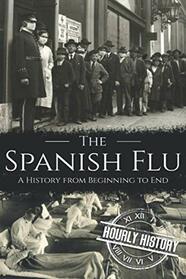This is a great way to learn about pandemics since they happen infrequently. Between 1918 and the end of 1920, the Spanish flu affected over 500 million people worldwide. Part of the reason for the massive infections was the huge transportation of large numbers of military troops worldwide. When they went home, they took the flu with them.
The flu had a devastating effect on the economies of countries. Because so many people were malnourished during the war, it allowed the virus to spread. There are differing theories about where the flu began. But one overriding problem is that various governments downplayed the effects to keep the emphasis on winning the war at the forefront. Besides the world war, Russia was in the midst of its revolution, which caused starvation.
There are theories about the flu outbreak in the US, Asia, and Europe. The epicenter in the US was Kansas, with so many men returning from war. However, it is not considered the beginning of the flu worldwide. By March of 1918, the first wave of the flu had peaked. However, this first wave was nothing compared to the second and third waves of the disease.
At the same time, doctors were generally at war, so they did not have the information to staunch the disease early. Medical info was not as available then as it is today. There were no antiviral drugs at the time, nor penicillin. With few medicines, quarantine was the most effective way to decrease deaths.
The second wave abated in November and December of 1918. However, the third wave started in Australia in January 1919 and spread globally. However, panic came with the third wave. The populations were decimated, thinking there was no end to the death. Suddenly, the virus disappeared.
The book ends with a short summary of the pandemics since the Spanish Flu. This flu killed more people than during all of World War I.
The flu had a devastating effect on the economies of countries. Because so many people were malnourished during the war, it allowed the virus to spread. There are differing theories about where the flu began. But one overriding problem is that various governments downplayed the effects to keep the emphasis on winning the war at the forefront. Besides the world war, Russia was in the midst of its revolution, which caused starvation.
There are theories about the flu outbreak in the US, Asia, and Europe. The epicenter in the US was Kansas, with so many men returning from war. However, it is not considered the beginning of the flu worldwide. By March of 1918, the first wave of the flu had peaked. However, this first wave was nothing compared to the second and third waves of the disease.
At the same time, doctors were generally at war, so they did not have the information to staunch the disease early. Medical info was not as available then as it is today. There were no antiviral drugs at the time, nor penicillin. With few medicines, quarantine was the most effective way to decrease deaths.
The second wave abated in November and December of 1918. However, the third wave started in Australia in January 1919 and spread globally. However, panic came with the third wave. The populations were decimated, thinking there was no end to the death. Suddenly, the virus disappeared.
The book ends with a short summary of the pandemics since the Spanish Flu. This flu killed more people than during all of World War I.




